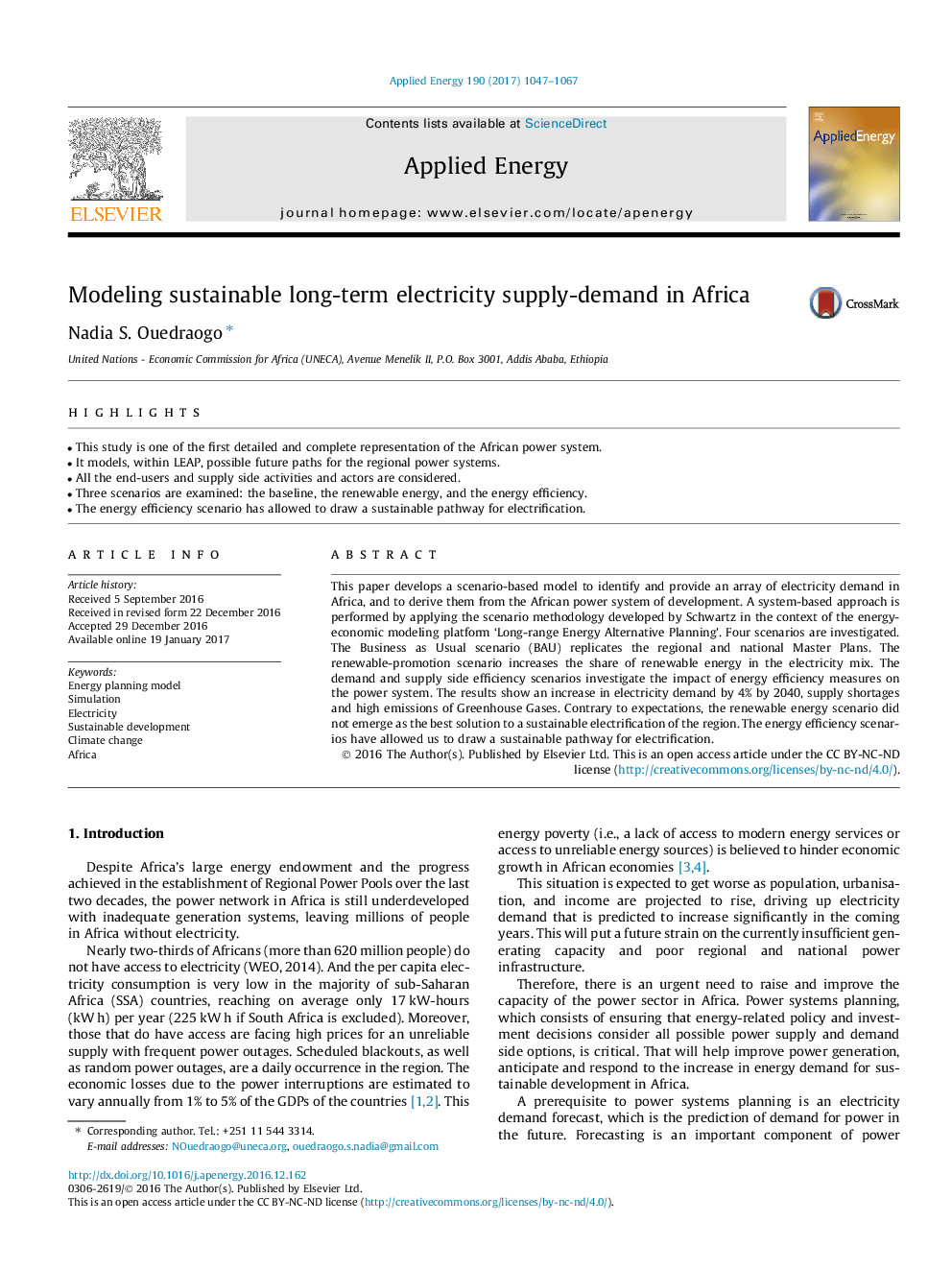| Article ID | Journal | Published Year | Pages | File Type |
|---|---|---|---|---|
| 6478673 | Applied Energy | 2017 | 21 Pages |
â¢This study is one of the first detailed and complete representation of the African power system.â¢It models, within LEAP, possible future paths for the regional power systems.â¢All the end-users and supply side activities and actors are considered.â¢Three scenarios are examined: the baseline, the renewable energy, and the energy efficiency.â¢The energy efficiency scenario has allowed to draw a sustainable pathway for electrification.
This paper develops a scenario-based model to identify and provide an array of electricity demand in Africa, and to derive them from the African power system of development. A system-based approach is performed by applying the scenario methodology developed by Schwartz in the context of the energy-economic modeling platform 'Long-range Energy Alternative Planning'. Four scenarios are investigated. The Business as Usual scenario (BAU) replicates the regional and national Master Plans. The renewable-promotion scenario increases the share of renewable energy in the electricity mix. The demand and supply side efficiency scenarios investigate the impact of energy efficiency measures on the power system. The results show an increase in electricity demand by 4% by 2040, supply shortages and high emissions of Greenhouse Gases. Contrary to expectations, the renewable energy scenario did not emerge as the best solution to a sustainable electrification of the region. The energy efficiency scenarios have allowed us to draw a sustainable pathway for electrification.
